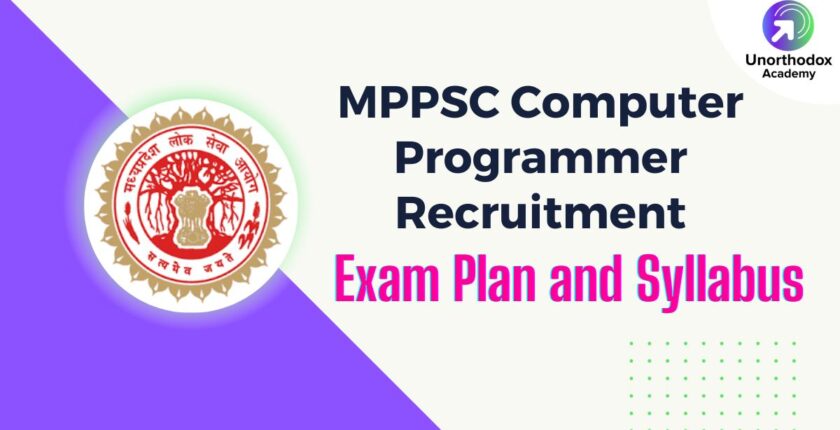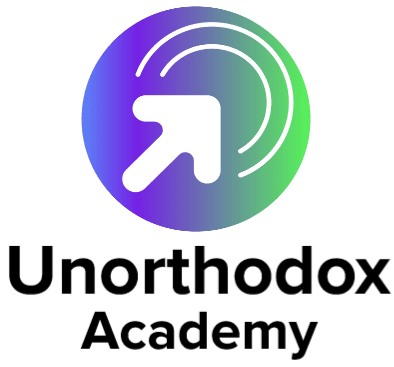New Article
MPPSC Computer Programmer Exam Plan and Syllabus

MPPSC Computer Programmer Exam Plan and Syllabus
MPPSC Computer Programmer Exam Plan and Syllabus has been recently published by the Madhya Pradesh Public Service Commission (MPPSC) on its official website. The official notification includes the detailed exam plan and syllabus for the computer programmer recruitment exam 2021.
Computer Programmer Exam Marks Plan
| Computer Programmer Exam 2021 | Marks |
| (Section-A) General Knowledge of Madhya Pradesh, National and International level | 150 |
| Section B Computer Science and Information Technology | 300 |
| Total | 450 |
| Interview | 50 |
| Total Marks | 500 |
The time allotted for the written exam of Section A and Section B combined is 3 Hours.
MPPSC Computer Programmer Exam Syllabus
COMPUTER PROGRAMMER EXAM
(Section-A) General Knowledge of Madhya Pradesh, National and International level
1. History culture and literature of M.P
- Important Historical events and Major dynasties of M.P.
- Contribution of Madhya Pradesh in the Independence movements.
- Art, Architecture and culture of M.P.
- Main Tribes and Dialects of M.P.
- Main festivals, folk music and folk art of M.P.
- Important literary figures of M.P. and their literature.
- Main Tourist places of M.P.
- Important personalities of M.P.
2. Geography of the Madhya Pradesh
- Forest, Mountain and Rivers of M.P.
- Climate of M.P.
- Natural and mineral resources of M.P.
- Energy Resources: Conventional and Non- conventional.
- Main irrigation and Power projects of M.P.
3. Politics and Economy of M.P.
- Political system of M.P. (Governor, Cabinet, Legislative Assembly).
- Panchayati Raj in M.P.
- Social system of M.P.
- Demography and census of M.P.
- Economic development of M.P.
- Main industries of M.P.
- Agriculture and Agri based industries in M.P.
4. Current events of International, National and M.P.
- Important Contemporaneous events.
- Famous sports competitions; awards and sports institution of the State and country.
- Welfare schemes of M.P. state.
- Famous personalities and Places.
5. Information and Communication Technology
- Electronics, computers, information and communication technology.
- Robotics, artificial intelligence and cyber security.
- E- Governance.
- Internet and Social networking site.
- E- Commerce.
Section B
Computer Science and Information Technology
- Computer Architecture and Organization
Von-Neumann Model, Block Diagram of Computer -CPU. PO and Memory, I/O Devices, Buses, Memory Hierarchy, Control unit organization,
Microinstruction, Hard wired and Micro Programmed Control unit, control memory, Types of memory, Cache memory and Cache memory mapping policies. Computer arithmetic, Number systems, Integer arithmetic. Floating point arithmetic,2’s complement, Multiprocessors. Parallel computing, Flynn’s classification, An’ay processing. Vector processing Pipelining. - Computer Programming, Data Structures & Object-Oriented Analysis and Design
Fundamentals of Computer programming, Programing languages, Flow chart. Algorithms and. pseudocode, Various data types, Control structures, Iteration and Recursive Procedures and functions. Data structures – Arrays, Linked lists, Stack, Queue, Trees, Graphs.
Object oriented concepts – Inheritance, Polymaphism and Data Encapsulation, Messages and Methods, Objects and Classes Components and
Frameworks, Classes and Methods in Java. - System Programming and Operating system
System pi’ograms, language processors. Assemblers, Compilers, Macros and Macroprocessors, Linkers and Loaders. Operating System Concepts-Types of OS, Functions of OS,Process Management – Operations on processes, Threads, IPC, CPU scheduling techniques. Process
coordination. Synchronization and Critical section problem. Semaphores, Deadlocks – Deadlock prevention, Detection and Avoidance. Memory management, Virtual memory- demand paging, page replacement algorithms. - Algorithm Design and Complexity of Computing
Time and Space complexity analysis of algorithms, Big-0, Omega, and Theta notations. Heap sort. Merge sort, Quick sort. Insertion sort methods and their complexity, searching – Binary search. Linear search, Dynamic programming – 0/1 Knapsack problem, Floyd Warshall algorithm, Greedy method of designing – Knapsack problem, single source shortest path problem, Divide and Conquer method. - Theoretical Foundations of Computing
Finite automata as a language acceptor and translator. Moore Machine and Mealy Machine. Types of Finite Automata, NDFA and DFA. Regular expressions. Crammers -Types of grammer, Context sensitive grammer and Context free grammer. Push down automata – Deterministic and Non-Deterministic PDA. Turing machines and Techniques for construction, Universal Turing machine. Multitape and Multihead turing machine. - Artificial Intelligence and Neural Networks
Basic Principles of AI, Production systems. Heuristic search. Hill climbing. Best first search. Control strategies, Knowledge representation using predicate and Propositional logic, Resolution, Refutation, Probabilistic reasoning, Bayes theorem, Semantic networks. Conceptual dependency. Backward reasoning. Neural Networks basics. Activation functions. Learning . and Learning techniques. - Data Base and Information System
Data Models, Schemas and Instances, Data independence, ER Models, Entities and Attributes, Generalization, Aggregation and Specialization, Relational Data Models, Tuples, Attributes, Relations. Keys, lntegrity Constraints, Referential integrity. File Types – Sequential, Indexed, Random access and Relative files, DBMS -types and Applications , Data Base Design concepts, Nonnalization Techniques, Data redundancy and consistency. Data description, manipulation and definition languages , RDBMS — concepts, SQL programming – queries, triggers, views,
Relational Algebra, CK’erviewofSQL Server and Oracle. - Computer Networks and Web Engineering
ISO – OSI model, Layers of OSI model, Computer networking hardware. Channels & Bandwidth, Network topology, Protocols, Routing Algorithms, Congestion, Circuit, Packet and Message switching, Ethernet, LAN , MAN and WAN features, Internet, Intranet TCP/IP model and it’s layer, IP addresses, IPV4, IPV6, Storage area networks, Error detection and recoveiy. Concepts of WWW, Website Development – HTML, CSS, Applets and Servlets, MVC Architecture, Client — Server technology, Web servers, Application server and Data Base server. Data base connectivity. Scripting Languages, Basic features of JSP, ASP, JQuery and Java scripts, Overview of J2EE, Front End Development, Web services, XML technologies and Java framework, Knowledge of android. - Computer Graphics
Raster scan devices and Random scan devices. Frame buffer, Scan conversion, Line drawing algorithms and Circle drawing algorithm. Two dimensional and Three dimensional transformations – scaling, rotation and translation, Line and Polygon clipping, Bezier and B-Spline methods of curve generation, RGB, CMY color models. Animation. - Software Engineering and Project Management
Software development life cycle, Process models – Iterative development, Waterfall Development, Software Metrics, Software Testing and Quality Assurance, Project management, Project management Tools, Risk management, Project life cycle, SDLC, Cost estimation and Scheduling, Types of software maintenance, Software Design Process, Soft\vare Modeling and UML.
Download PDF of Exam Plan and Syllabus
Read More : MPPSC Computer Programmer Recruitment Full details
MPPSC Free Study Material (English/Hindi)
🤩Follow Our Social Media Handles
YouTube 👉 https://bit.ly/36wAy17
Telegram👉 https://bit.ly/3sZTLzD
Facebook 👉 https://bit.ly/3sdKwN0
Daily Current Affairs Quiz for UPSC, MPSC, BPSC, and UPPSC: Click here

